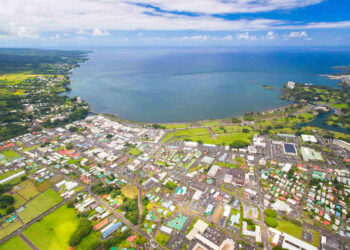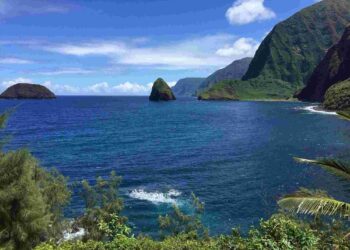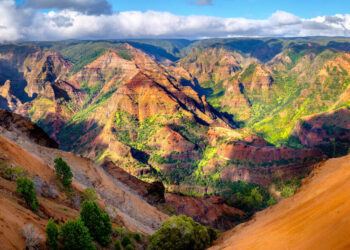Straddling California’s Mojave and Colorado Deserts, Joshua Tree National Park covers nearly 800,000 acres of pure wild, southeast of LA. It’s a clash of high desert scrub and low desert sands—no strip malls, just rock piles and skies that swallow you whole. Whether you’re here to scramble up stones, stargaze till your neck hurts, or just soak in the vast, it’s got a pull that’s primal and sharp.
Joshua Tree doesn’t come at you soft—it grips hard, all jagged rock and twisted limbs against a sky that’s too big to hold. It’s a sprawl of spiky yuccas stabbing the silence, dunes that shimmer with heat, boulders that loom like old gods. This isn’t a quick detour; it’s for the restless who chase the edge, the quiet ones who hear the wind’s low howl, the souls who’d rather feel the raw than tame it.
Joshua Tree sinks into you—eyes tracing the horizon’s burn, breath snagging on dust and creosote, spirit tilting toward something ancient and untamed. And there’s more: hidden oases where palms defy the dry, trails that climb to vistas that stretch beyond words, moments where the sun dips and the whole desert flares gold. Joshua Tree doesn’t let go; it claws in, a rough ache you carry like sand in your boots.
Fun Fact: Those funky Joshua trees? Named by Mormon settlers who saw their arms like the prophet Joshua pointing to the promised land—fitting for a place that feels like a pilgrimage.
How to Get There
Flying In
Joshua Tree’s remote, but not unreachable. Palm Springs International Airport’s your closest drop, 45 minutes southwest—flights from San Francisco or LA zip in under an hour, Chicago’s three, east coast five or six. Rent a car at the gate; this park’s no place for schedules—just open road and dust. LA’s airports, two hours west, work too if you want more flights and a scenic haul through the sprawl.
Driving the Desert Stretch
If you’re behind the wheel, take I-10 east from LA—two hours flat, past wind farms and strip malls till the desert opens up. From Palm Springs, it’s a 40-minute shot north on Highway 62, pavement giving way to sand and scrub. The park’s got three gates—West, North, and Joshua Lane—but the drive’s the prelude: Joshua trees start spiking the view, rocks pile higher, and the air turns dry as bone. Slow down; the wild’s already started.
Things to Do in Joshua Tree
Keys View
Keys View sits 5,185 feet up, a lookout that slams you with the desert’s scale—Coachella Valley below, San Jacinto peaks jabbing the sky. Wind whips hard; on clear days, you might spot Mexico’s edge. It’s a short drive and a quick walk—bring a jacket, it bites up there.
Hidden Valley
Hidden Valley’s a rock-ringed bowl, a mile loop through a cattle rustler’s old hideout. Joshua trees twist among boulders; climbers spider up the stone. It’s easy, eerie, and the quiet presses in—perfect for a slow wander or a quick sketch.
Skull Rock
Skull Rock’s a desert oddity—wind and rain carved a boulder into a grim face, staring blank. It’s right off the road near Jumbo Rocks; scramble around, feel the grit. Kids love it, but the weirdness hooks anyone—sunset turns it ghostly.
Cholla Cactus Garden
The Cholla Cactus Garden glows in the low desert—a fuzzy sea of spines that catch the light like fire. A short path winds through; don’t touch, those barbs stick. Dawn or dusk here is magic—shadows stretch, and the silence hums.
Stargazing at Ryan Mountain
Ryan Mountain’s a 3-mile hike to 5,457 feet, but the real payoff’s at night. No city glow, just a sky punched with stars—Milky Way so thick you’d swear it’s spilling. Pack a blanket, lie back; the desert night’s a show that drowns out everything else.
Dive into Joshua Tree’s Story
Joshua Tree’s got a pulse older than its name. The Pinto people roamed here 8,000 years back, leaving arrowheads in the dust. Later, the Cahuilla and Serrano hunted its edges, coaxing life from springs. Gold prospectors scratched the dirt in the 1800s—rusted mines still gape—then hippies and artists rolled in, chasing the void. Now, it’s a park born in ‘94, rangers guarding tales of nomads and dreamers etched into the rock. The past crackles here, carried on the dry wind.
Where to Stay
Joshua Tree’s got spots to bunk, plush to bare-bones. Here’s the lineup:
AutoCamp Joshua Tree
AutoCamp’s Airstreams gleam near the park—retro trailers with beds that hug you, firepits spitting sparks. Stars overhead, desert quiet all around; it’s glamping with a cool edge, not cheap but worth it.
Pioneertown Motel
Pioneertown Motel’s a throwback 20 minutes north—cowboy vibes, wood beams, quilts. Built for old Western films, it’s got grit and charm; the desert’s right outside, and the price won’t sting.
Joshua Tree Inn
Joshua Tree Inn’s a low-slung haunt near the west gate—simple rooms, courtyard with a pool, ghosts of Gram Parsons if you believe the lore. It’s budget-friendly, close, and feels like the park’s shadow.
Joshua Tree Eats
The desert’s food is lean and fierce—straight from the land, no fuss. Taste this:
Quail
Quail’s a local bite—grilled, smoky, with a pepper kick. Small but meaty, it’s the desert on a plate, wild and tough.
Date Shake
Date shakes blend local dates—sweet, sticky—into cold cream. It’s thick, rich, and cuts the heat like a lifeline.
Prickly Pear Candy
Prickly pear candy’s a tart-sweet chew, made from cactus fruit that dots the dunes. It’s bright, odd, and pure Joshua Tree.
Wrapping Up
Joshua Tree’s a raw sprawl of rock and sky, where the days burn hot and the nights glitter cold. It’s jagged peaks meeting endless flats, old stories scratched into stone, and a stillness that rattles you awake. Whether you’re climbing a boulder, chasing a sunset, or just breathing the dust, it hits hard. Joshua Tree’s not a pit stop—it’s a deep, wild gnaw that sticks, pulling you back to its stark heart long after the sand’s shaken off.











